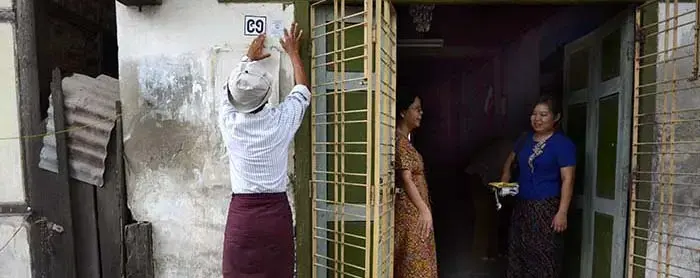Conducting a pilot census is a practice used in most censuses. It is a comprehensive test of all census procedures. During the pilot census, all stages of the census process are to be tested: mapping, interviewing, data capture, processing, and evaluation of census results.
This test provides important information on the adequacy of the field organization, training programs, the extent of the burden placed on interviewees, the data processing plan, the accuracy of the maps, and other important aspects to be critical in a census.
From 30 March to 10 April, 2013, Myanmar undertook a pilot census exercise to test procedures and prepare for the nationwide census in 2014.
One hundred and twenty (120) school teachers were trained to be enumerators and supervisors after which they visited thousands of households and interviewed residents in selected villages in 20 townships across the country representing a cross-section of Myanmar's diverse geographic and ethnic mix.
Officials from the Ministry of Immigration and Population closely monitored the process to test procedures for data collection and public involvement.
Prior to the pilot, teachers recruited as enumerators and supervisors were given five days of training in enumeration techniques, and communities were informed about the process. Exactly one year ahead of the actual census, enumerators fanned out across villages, using carefully prepared census maps.
In each home, they asked heads of households 41 questions-on family members' sex and ages, education, occupations, religion, ethnicity, disabilities, births and deaths; as well as on housing, lighting and water sources, and more.
At the end of each day's counting, enumerators reviewed their experience, checked their questionnaires and reported to officials.
Observing the process
UNFPA deployed a team of independent observers to help the Government learn as much as it can from the pilot. The observers, trained in survey techniques, sat in on some of the census interviews. They watched to see whether questions were asked correctly and answers recorded accurately. They spoke with the respondents afterwards to see how well they understood the questions, and asked enumerators about challenges they faced.
Observers also interviewed political party members, community leaders and others with influence in the townships visited, to learn their views on the census and on how to encourage full public participation. UNFPA compiled the reports from observers and shared them with the Department of Population, Ministry of Immigration and Population, to help it improve the enumeration and community outreach.


